15 Ng. 100 Đ. Nguyễn Xiển, Thanh Xuân Nam, Thanh Xuân, Hà Nội 100000
Hanoi: The Emerald Jewel of Asia – A Timeless Journey Through Vietnam’s Capital
Introduction: Unveiling the Charms of Hanoi
Hanoi, the venerable capital of Vietnam, is a city that pulses with an energy both ancient and contemporary. It's a place where thousands of years of history whisper from moss-covered pagodas and colonial-era mansions, while the vibrant rhythm of modern life bustles through its labyrinthine Old Quarter. More than just a city, Hanoi is an experience – a sensory feast of captivating aromas, melodious sounds, and breathtaking sights. From the poetic tranquility of Hoan Kiem Lake to the bustling vibrancy of its street food scene, Hanoi invites you to peel back its layers, revealing a soul that is at once resilient, charming, and utterly captivating.
This comprehensive guide will take you on an immersive journey through the heart of Hanoi, exploring its rich history, diverse culture, culinary delights, and hidden gems. Whether you’re a first-time visitor or a returning enthusiast, prepare to be enchanted by the timeless allure of this extraordinary city. And as you envision your own Hanoi adventure, remember that Golden Trail Travel (https://goldencyclingtours.com) is your ideal partner for crafting unforgettable experiences, offering unique tours that allow you to truly immerse yourself in the local culture.
Chapter 1: A Tapestry of Time – Hanoi’s Enduring History
Hanoi's history is as profound as it is long, spanning over a millennium. Originally named Thang Long, meaning "Ascending Dragon," the city was established in 1010 AD by Emperor Ly Thai To. Its strategic location on the Red River Delta made it a crucial political and cultural center for centuries.
The Ly Dynasty (1009-1225): Birth of an Imperial Capital The Ly Dynasty marked a golden age for Vietnam, and Thang Long blossomed under their rule. This era saw the construction of iconic landmarks such as the Temple of Literature, Vietnam's first national university, and the strengthening of the imperial administrative system. The city's original layout, centered around the Imperial Citadel, began to take shape.
Subsequent Dynasties and Periods of Transformation Through various dynasties – the Tran, Le, Mac, and Nguyen – Hanoi continued to evolve. Each left an indelible mark on the city's architecture, culture, and social fabric. The Imperial Citadel of Thang Long, now a UNESCO World Heritage site, stands as a testament to these powerful empires. It has been a continuous center of power for over 13 centuries, adapting and rebuilding with each passing era.
French Colonial Influence (1883-1945): A European Imprint The late 19th and early 20th centuries brought significant changes with French colonial rule. The French transformed parts of Hanoi, introducing wide boulevards, grand colonial buildings, and a distinct European architectural style that still defines much of the city's charm. The Hanoi Opera House, St. Joseph's Cathedral, and the Presidential Palace are prime examples of this architectural legacy, blending seamlessly with the traditional Vietnamese aesthetic.
The Struggle for Independence and Modern Hanoi Hanoi played a pivotal role in Vietnam's struggle for independence. It was here that President Ho Chi Minh declared the Democratic Republic of Vietnam in 1945, and the city endured significant conflict during the First and Second Indochina Wars. The resilience of its people is evident in the city's swift recovery and development into the vibrant capital it is today. Walking through Hanoi is like walking through a living history book, where every street corner and ancient building tells a story of perseverance and pride.
Chapter 2: The Heartbeat of Hanoi – Exploring Iconic Landmarks
Hanoi boasts an array of captivating landmarks, each offering a unique glimpse into its soul.
Hoan Kiem Lake (Lake of the Returned Sword): A Serene Oasis At the very heart of Hanoi lies Hoan Kiem Lake, a place of profound beauty and legend. The name itself stems from a tale of Emperor Le Loi receiving a magical sword from a golden turtle to defeat the Chinese Ming aggressors, later returning it to the turtle in the lake. Ngoc Son Temple, accessible via the iconic Huc Bridge (Bridge of the Rising Sun), stands gracefully on an islet in the lake, offering a peaceful retreat. Locals gather here daily for tai chi, morning exercises, and leisurely strolls, making it a perfect spot for people-watching and soaking in the city's serene side.
The Old Quarter (Hanoi 36 Streets): A Labyrinth of Life Stepping into the Old Quarter is like stepping back in time. This bustling labyrinth of narrow streets, each historically dedicated to a specific trade or craft (e.g., Hang Bac for silver, Hang Gai for silk), is the very essence of Hanoi's vibrant street life. Motorbikes weave through crowded alleys, vendors hawk their wares, and the aroma of street food permeates the air. It’s a sensory overload in the best possible way. Explore on foot, or better yet, experience a cyclo ride for an authentic perspective. This is where you truly feel the pulse of Hanoi.
Temple of Literature & National University (Van Mieu Quoc Tu Giam): A Symbol of Education Founded in 1070, the Temple of Literature is Vietnam's first national university and a beautifully preserved example of traditional Vietnamese architecture. Dedicated to Confucius, it served as a center of learning for centuries, educating mandarins and scholars. The tranquil courtyards, ancient trees, and stone steles inscribed with the names of successful candidates evoke a profound sense of history and respect for knowledge.
Ho Chi Minh Mausoleum Complex: Reverence for a National Hero The final resting place of Vietnam's revered leader, Ho Chi Minh, is a significant pilgrimage site for many Vietnamese. The imposing granite mausoleum is surrounded by carefully manicured gardens. Adjacent to it are the One Pillar Pagoda, an elegant wooden temple resting on a single stone pillar, and Ho Chi Minh's Stilt House, where he lived a simple life. Visitors should dress respectfully and observe strict silence.
Imperial Citadel of Thang Long: A UNESCO World Heritage Site Discover the layers of Vietnamese history at the Imperial Citadel. This archaeological site, continuously inhabited as a center of power for over 13 centuries, offers insights into the successive dynasties that ruled Vietnam. Excavations continue to unearth new discoveries, revealing the grandeur of past empires.
Tran Quoc Pagoda: Ancient Beauty on West Lake Located on a small island on West Lake, Tran Quoc Pagoda is one of Hanoi's oldest pagodas, dating back to the 6th century. Its elegant structure, surrounded by serene waters, creates a picturesque and spiritual setting. It's a popular spot for meditation and offers stunning sunset views over the lake.
Hanoi Opera House: A French Architectural Gem A grand example of French colonial architecture, the Hanoi Opera House is a cultural landmark. Modeled after the Palais Garnier in Paris, it hosts a variety of performances, from traditional Vietnamese opera to international concerts. Even if you don't attend a show, its exterior is worth admiring.
St. Joseph's Cathedral: A Neo-Gothic Masterpiece Completed in 1886, St. Joseph's Cathedral is a striking neo-Gothic church in the heart of Hanoi, resembling Notre Dame de Paris. Its impressive facade and stained-glass windows offer a stark contrast to the surrounding Vietnamese architecture and serve as a reminder of the city's colonial past.
Chapter 3: Culinary Journey – The Flavors of Hanoi
Hanoi is a paradise for food lovers. Its cuisine is renowned for its fresh ingredients, delicate balance of flavors, and vibrant street food culture.
Pho: The Quintessential Vietnamese Noodle Soup No visit to Hanoi is complete without indulging in a bowl of pho. This iconic noodle soup, with its fragrant broth, tender slices of beef (pho bo) or chicken (pho ga), fresh herbs, and rice noodles, is a comforting and soul-satisfying experience. Each pho vendor has their own secret broth recipe, making it an endless adventure to find your favorite.
Bun Cha: Hanoi's Signature Dish Bun Cha is a grilled pork noodle dish that originated in Hanoi. It consists of succulent grilled pork patties and slices of marinated pork belly served in a sweet and sour dipping sauce, accompanied by vermicelli noodles and a generous plate of fresh herbs. It’s a harmonious blend of smoky, tangy, and savory flavors.
Cha Ca La Vong: A Unique Fish Dish Cha Ca La Vong is a truly unique Hanoi specialty. Fresh fish (often snakehead or catfish) is marinated with turmeric and galangal, then pan-fried with dill and spring onions at your table. It's served with vermicelli noodles, peanuts, and a pungent shrimp paste sauce. The interactive cooking experience adds to its charm.
Banh Mi: The Vietnamese Sandwich Sensation While found throughout Vietnam, Hanoi's banh mi stalls offer delicious variations of this French-influenced baguette sandwich. Crispy on the outside, soft on the inside, it's typically filled with pâté, various cold cuts, fresh herbs, pickled vegetables, and chili. A perfect grab-and-go meal.
Egg Coffee (Ca Phe Trung): A Decadent Delight Invented in Hanoi, egg coffee is a surprisingly delicious and creamy beverage. A rich, strong Vietnamese coffee is topped with a thick, frothy layer of whisked egg yolk and condensed milk, creating a sweet and indulgent treat that resembles a liquid tiramisu.
Street Food Adventures: A Culinary Exploration The best way to experience Hanoi's food scene is to embrace its street food. From nem ran (fried spring rolls) and goi cuon (fresh spring rolls) to xoi (sticky rice) and che (sweet soup desserts), every corner offers a new culinary discovery. Don't be afraid to pull up a plastic stool and join the locals for an authentic dining experience.
Cooking Classes: Unlock the Secrets of Vietnamese Cuisine For those who want to delve deeper, consider taking a cooking class. Many local establishments offer hands-on experiences where you can learn to prepare traditional Vietnamese dishes, from market visits to mastering the art of balancing flavors.
Chapter 4: Arts, Culture, and Traditions – The Soul of Hanoi
Hanoi is a vibrant hub of arts and culture, preserving ancient traditions while embracing contemporary expressions.
Water Puppet Theatre: A Unique Vietnamese Art Form The Thang Long Water Puppet Theatre is a must-see. This ancient art form, originating in the Red River Delta, involves puppeteers standing in waist-deep water behind a screen, manipulating puppets that appear to dance on the water's surface, telling tales of Vietnamese folklore and daily life accompanied by traditional music.
Traditional Crafts and Silk Villages Hanoi is surrounded by traditional craft villages. Bat Trang pottery village, just outside the city, is famous for its ceramics. Van Phuc Silk Village offers exquisite silk products, from garments to intricate embroideries. Exploring these villages provides insights into Vietnam's rich artisanal heritage.
Museums: A Window into Vietnam's Past Hanoi boasts numerous museums that offer deeper insights into Vietnam's history and culture.
Music and Performing Arts Beyond the water puppets, Hanoi has a thriving performing arts scene. Enjoy traditional Vietnamese music (like ca tru or quan ho), contemporary concerts, or live performances at various venues around the city.
Festivals and Celebrations Hanoi comes alive during its numerous festivals. Tet Nguyen Dan (Lunar New Year) is the most significant, bringing vibrant decorations, special foods, and family gatherings. Other festivals throughout the year celebrate local traditions, religious events, and historical milestones.
Chapter 5: Beyond the City Limits – Day Trips from Hanoi
Hanoi serves as an excellent base for exploring some of Northern Vietnam's most breathtaking natural wonders and cultural sites.
Ha Long Bay: A UNESCO World Heritage Natural Wonder Just a few hours' drive from Hanoi, Ha Long Bay is a truly iconic destination. Thousands of limestone karsts and islets rise dramatically from the emerald waters of the Gulf of Tonkin, creating a mystical seascape. Cruising through the bay, exploring caves, kayaking, and swimming are unforgettable experiences. Many tours offer convenient pick-ups from Hanoi.
Ninh Binh (Tam Coc - Bich Dong / Trang An): "Ha Long Bay on Land" Often referred to as "Ha Long Bay on Land," Ninh Binh province offers equally stunning limestone karsts, but in a lush, green setting. Tam Coc - Bich Dong is famous for its boat rides through rice paddies and caves, while Trang An Scenic Landscape Complex (a UNESCO World Heritage site) offers a more expansive and serene boat tour experience. Both are perfect for a day trip or an overnight stay.
Perfume Pagoda (Chua Huong): A Spiritual Journey A complex of Buddhist temples and shrines built into the limestone Huong Tich mountains, the Perfume Pagoda is a significant pilgrimage site. The journey involves a scenic boat ride along the Yen stream, followed by a hike or cable car ride up to the main pagoda, offering stunning views and a sense of spiritual tranquility.
Mai Chau: A Glimpse into Rural Life For a taste of authentic rural Vietnam and ethnic minority culture, Mai Chau Valley offers a peaceful escape. Stay in a traditional stilt house with a Thai ethnic minority family, enjoy cycling through rice paddies, and learn about local customs. It's a refreshing contrast to the bustle of Hanoi.
Chapter 6: Practical Tips for Your Hanoi Adventure
Best Time to Visit: The ideal time to visit Hanoi is during the autumn (September to November) or spring (March to April). Temperatures are mild, and rainfall is minimal. Summer (May to August) can be hot and humid, while winter (December to February) can be cool and damp.
Getting Around:
Accommodation: Hanoi offers a wide range of accommodation, from luxurious international hotels to charming boutique hotels, guesthouses, and budget-friendly hostels. The Old Quarter is popular for its central location and vibrant atmosphere.
Language: Vietnamese is the official language. English is spoken in tourist areas, hotels, and restaurants, but learning a few basic Vietnamese phrases (hello, thank you, please) will be greatly appreciated.
Currency: The Vietnamese Dong (VND). ATMs are widely available, and credit cards are accepted in most major hotels and restaurants. Cash is essential for street food and smaller vendors.
Safety: Hanoi is generally a safe city. Be aware of petty theft, especially in crowded areas. Be cautious when crossing streets, as traffic can be chaotic. Always wear a helmet if riding a motorbike.
Visa Requirements: Check visa requirements for Vietnam well in advance of your trip, as they vary by nationality.
Connectivity: SIM cards are readily available and affordable at the airport or mobile phone shops. Wi-Fi is common in cafes, hotels, and restaurants.
Chapter 7: Immerse Yourself with Golden Trail Travel
To truly unlock the magic of Hanoi and its surrounding regions, consider enhancing your experience with expertly crafted tours. Golden Trail Travel (https://goldencyclingtours.com) specializes in creating unforgettable journeys that go beyond the typical tourist paths.
Whether you dream of cycling through the serene rice paddies of Ninh Binh, exploring the hidden gems of Hanoi’s Old Quarter on a food tour, or embarking on a multi-day adventure to discover the remote beauty of Northern Vietnam, Golden Trail Travel offers a diverse range of itineraries. Their local guides provide invaluable insights into Vietnamese culture, history, and daily life, ensuring an authentic and enriching experience. With Golden Trail Travel, you’re not just seeing the sights; you’re living the story. Visit their website at https://goldencyclingtours.com to browse their tours and easily book your next adventure.
Conclusion: Hanoi – A City That Lingers in the Heart
Hanoi is more than just a destination; it's an emotion, a symphony of sights, sounds, and flavors that captivates the soul. From its ancient temples and bustling markets to its tranquil lakes and vibrant street life, the city offers a rich tapestry of experiences that will leave an indelible mark on your memory. It is a city of contrasts, where tradition harmonizes with modernity, and chaotic energy intertwines with moments of profound peace. As you depart, you’ll carry with you the lingering scent of pho, the melody of street vendors, and the warmth of Vietnamese hospitality. Hanoi truly is the emerald jewel of Asia, inviting you to return again and again to uncover its endless charms.
FAQ: Your Questions About Hanoi Answered
Q1: Is Hanoi safe for tourists? A1: Yes, Hanoi is generally very safe for tourists. Petty theft can occur in crowded areas, so it's advisable to be mindful of your belongings. Traffic can be chaotic, so always exercise caution when crossing streets.
Q2: What is the best way to get around Hanoi? A2: For short distances and exploring the Old Quarter, walking is ideal. For longer distances, Grab (a ride-hailing app for motorbikes and cars) is convenient and affordable. Cyclos offer a unique, leisurely experience in the Old Quarter.
Q3: What are the must-try foods in Hanoi? A3: You absolutely must try Pho (beef or chicken noodle soup), Bun Cha (grilled pork with noodles), Cha Ca La Vong (turmeric fish with dill), Banh Mi (Vietnamese baguette sandwich), and Egg Coffee. Explore the street food scene for endless delicious options.
Q4: How many days should I spend in Hanoi? A4: To experience Hanoi's main attractions and soak in its atmosphere, a minimum of 3-4 full days is recommended. This allows for exploration of the Old Quarter, major landmarks, and some culinary adventures. If you plan day trips, extend your stay accordingly.
Q5: Can I drink tap water in Hanoi? A5: No, it is not safe to drink tap water in Hanoi. Always drink bottled water, which is widely available and inexpensive.
Q6: What is the dress code for visiting temples and pagodas? A6: When visiting religious sites like temples, pagodas, or the Ho Chi Minh Mausoleum, it's respectful to dress modestly. This means covering your shoulders and knees.
Q7: Is bargaining common in Hanoi? A7: Yes, bargaining is common, especially in markets and with street vendors. It's expected and can be a fun part of the shopping experience. Start with about 50% of the asking price and negotiate from there.
Q8: What are the best day trips from Hanoi? A8: Popular day trips include Ha Long Bay (a UNESCO World Heritage site known for its stunning limestone karsts), Ninh Binh (often called "Ha Long Bay on Land" for its similar landscapes), and the Perfume Pagoda (a significant Buddhist pilgrimage site).
Q9: What currency is used in Vietnam? A9: The official currency is the Vietnamese Dong (VND). ATMs are widely available, and major credit cards are accepted in most hotels and larger establishments. It's always good to have some cash for smaller purchases and street food.
Q10: How do I book tours in Hanoi? A10: You can book tours through your hotel, local travel agencies, or reputable online platforms. For an authentic and well-curated experience, we highly recommend checking out Golden Trail Travel at https://goldencyclingtours.com for their diverse range of unique tours.
Customer Reviews: Experiences with Golden Trail Travel
"Our cycling tour with Golden Trail Travel through the villages outside Hanoi was the highlight of our trip! Our guide, Linh, was incredibly knowledgeable and passionate about Vietnamese culture. The bikes were well-maintained, and the route was stunning. We got to see a side of Vietnam we never would have on our own. Highly recommend booking with them!" – Sarah M., USA
"I took the street food tour with Golden Trail Travel, and it was an absolute culinary delight! Our guide, Bao, introduced us to the most authentic pho and bun cha, and even found us the best egg coffee in the city. His insights into local customs and history made the experience so much richer. The booking process on https://goldencyclingtours.com was super easy too." – David P., UK
"We used Golden Trail Travel for our two-day trip to Ninh Binh, and everything was perfectly organized. From the comfortable transportation to the incredible boat ride in Trang An and the delicious local meals, they truly thought of every detail. The communication before and during the trip was excellent. A truly memorable experience, thanks to Golden Trail Travel!" – Maria & Carlos G., Spain
"As an avid cyclist, I was looking for a real adventure, and Golden Trail Travel delivered! Their multi-day Northern Vietnam cycling tour was challenging but incredibly rewarding. The landscapes were breathtaking, and the interactions with local communities were priceless. The team at Golden Trail Travel handled all logistics flawlessly. If you love cycling and authentic travel, check out https://goldencyclingtours.com." – Tom R., Australia
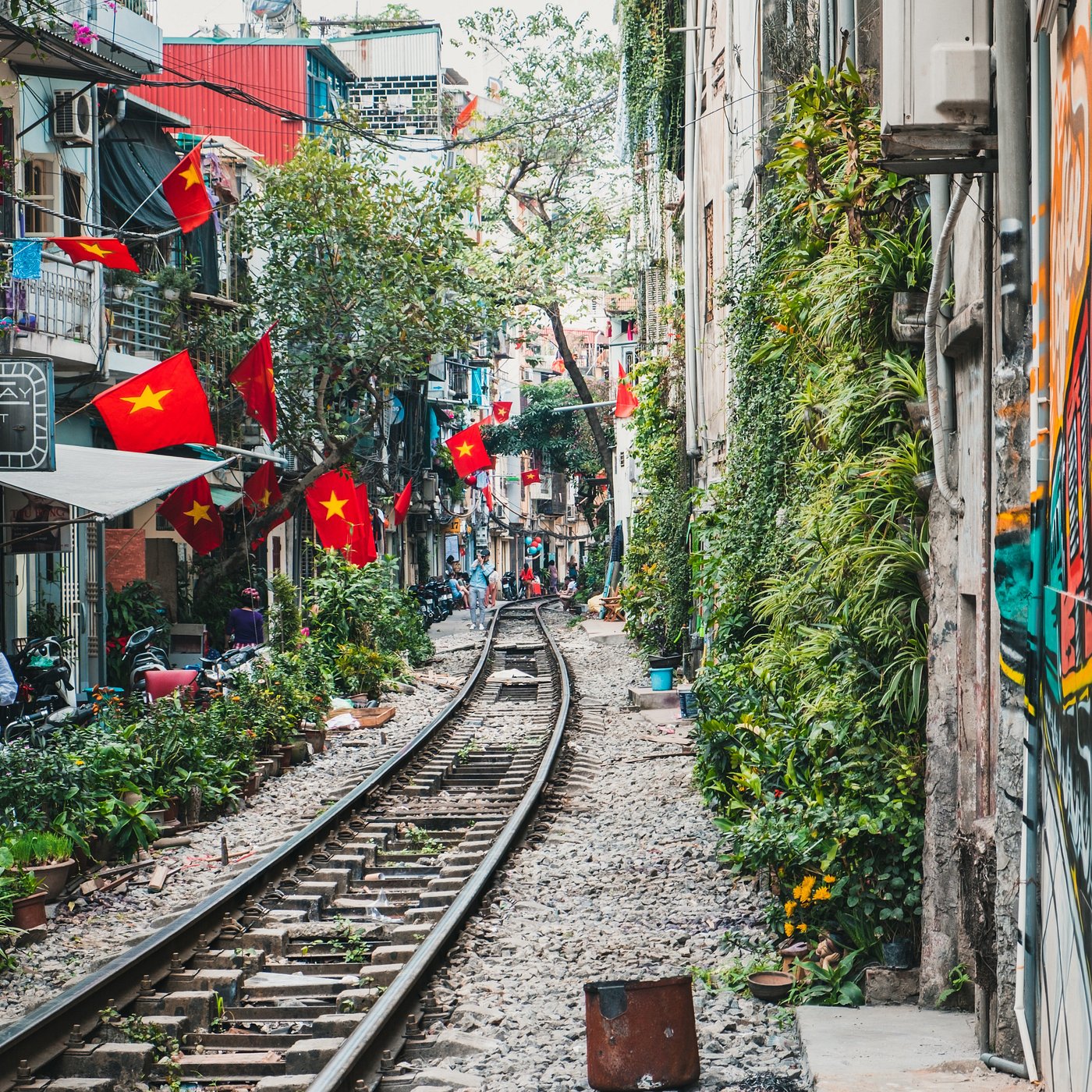
.jpg)
We have a wide range of kids bikes for our bike tours in Hanoi Vietnam. Our small bicycles are used for both boys and girls. There is no difference between boy bikes and girl bikes. The bike frame is the same – Children’s bikes are sized by wheel rather than frame because it’s the wheels that determine the proportions of the rest of the bike. Make sure your child can operate the brake and gear levels comfortably, and that the pedals are positioned for safe stopping.
May 28, 2025
.jpg)
A single speed bicycles or a fixed gear bike is a type of bicycle with a single gear ratio. These bicycles are without derailleur gears, hub gearing or other methods for varying the gear ratio of the bicycle. There are many types of single speed bicycles such as single speed bikes for children, cruiser type bicycles, classic commuter bicycles, unicycles, bicycles designed for track racing, fixed-gear road bicycles, and single-speed mountain bikes.
May 28, 2025
.jpg)
Mountain bikes are designed to be ridden over rugged terrain and technical trails with logs, rocks, roots and other obstacles. They have a sharp frame geometry that puts the rider in a commanding position to pedal and climb efficiently. They have lower gear ratios that allow riders to pedal through steep and difficult terrain. Because of their intended use, mountain bikes are sturdy and overbuilt to handle the abuse of the trails. They usually have larger, heavily knobbed tires and strong brakes like hydraulic disc brakes. Many mountain bikes feature a kind of suspension shock over the front tire or both front and rear, allowing the frame to comply with the bumps, jumps and challenges of the trail.
May 28, 2025
.jpg)
Giant are the world’s leading brand for quality and safety in bikes. Giant Anyroad bicycles are designed with a lightweight yet durable ALUXX alloy frame featuring a taller headtube and increased toptube stand-over distance for confident handling.
May 28, 2025
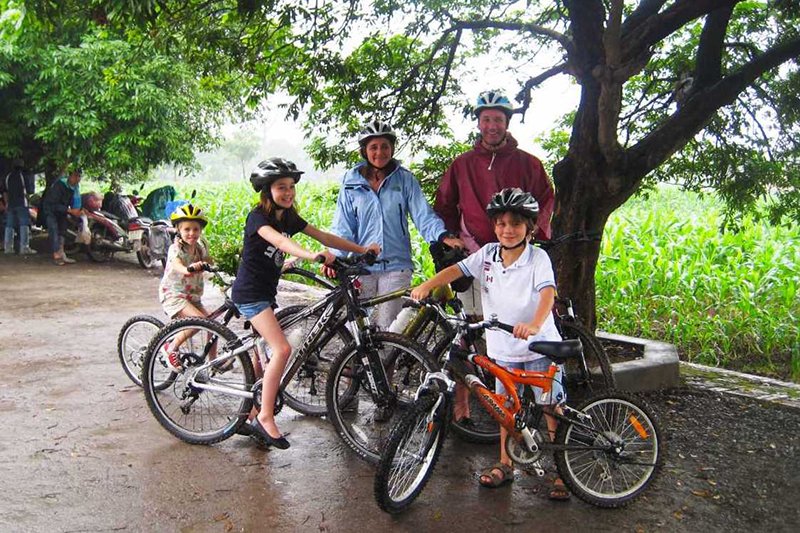
Hanoi Cycling lets you experience the beautiful countryside of the Vietnam’s capital, as well as rural Hanoi village life from up close. Pedaling on the back roads, through countryside lanes while greeting local farmers and school kids as you pass by, all add to an immersive experience!
May 28, 2025
.jpg)
Hybrid bicycles are a combination of a road bike and a mountain bike. Hybrid bikes feature relaxed frame geometry and raised handlebars, meaning that you sit up straigh
May 28, 2025
.jpg)
At the inaugural night tour of Cuc Phuong National Park in northern Vietnam on Saturday, close to a hundred visitors took part in a variety of activities.
A park spokesman said that most visitors were excited to take part in the trip.
May 28, 2025
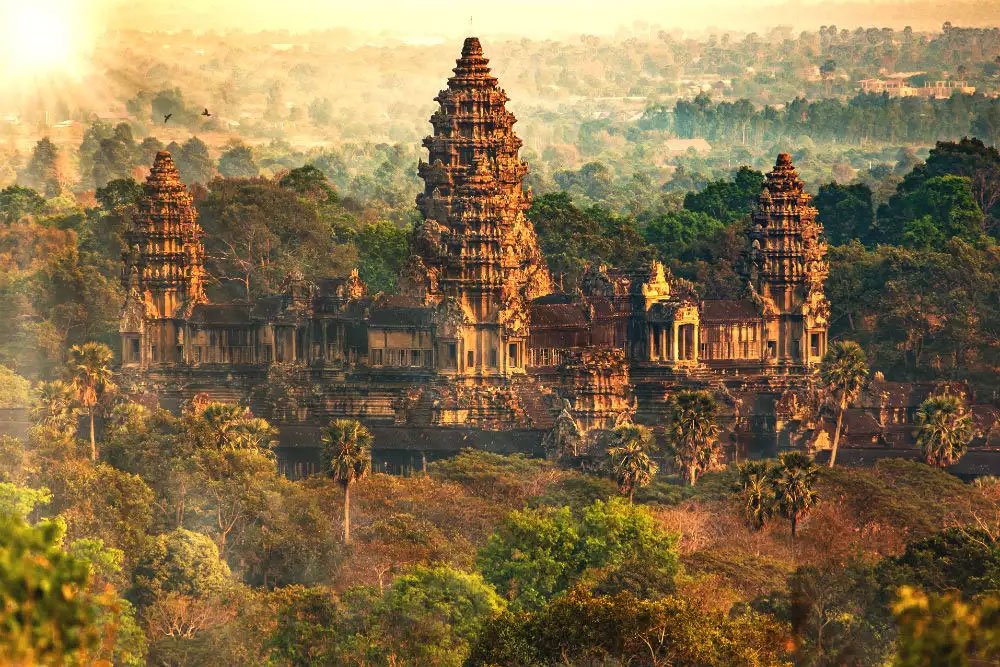
In Cambodia, the climate is tropical, and stays warm all year long. It is governed by the monsoon winds, so that this country has two main seasons in a year.
May 28, 2025
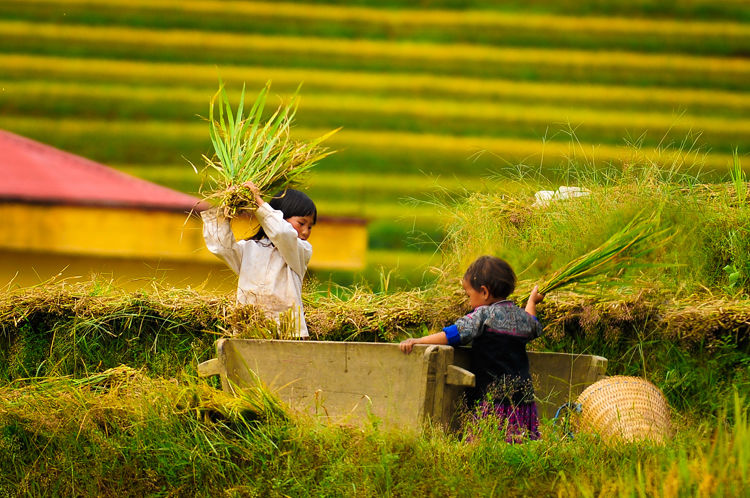
Mu Cang Chai is a highland district of Yen Bai province, about 280km from Hanoi. Each season, this place receives thousand domestic and international tourists. The district lies at the foot of the Hoang Lien Mountains, at an altitude of 1,000 m above sea level. To reach Mu Cang Chai district, go through Khau Pha pass - one of the four Great Passes of the Northwest.
May 28, 2025

People said that “If one has not visited floating market, he has not visited the south-west of Vietnam”. Literally, floating markets which have been around for a long time make the liveliest part of life in the south-west, the land of rivers, canals and ditches.
May 28, 2025
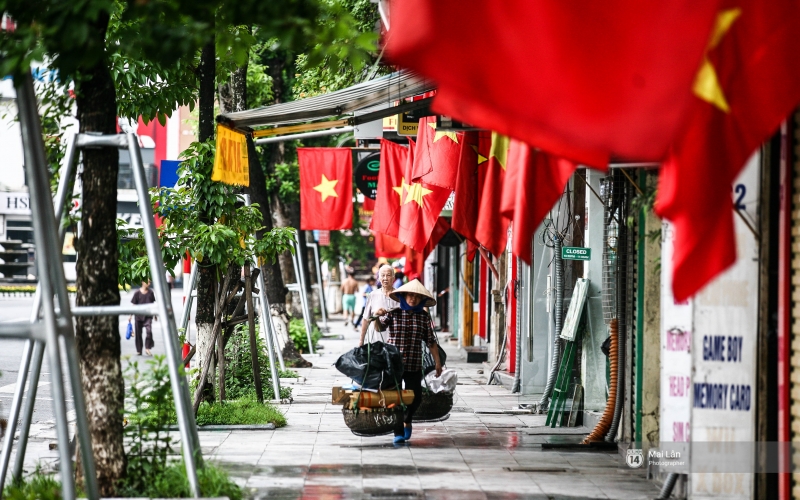
If you are in Vietnam on September 2, you will feel the extraordinary daily life of Vietnamese people. So what activities are recommended on this day?
May 28, 2025

Pottery class Bat Trang is one of activity with unique experience which help people to reduce stress and improve the creativity.
May 28, 2025

Prime Minister Prayut Chan-o-cha says Thailand will open the country to visitors from 46 countries instead of only 10 Covid-19 low-ríkyy countries announced earlier, starting from Nov 1.
May 28, 2025